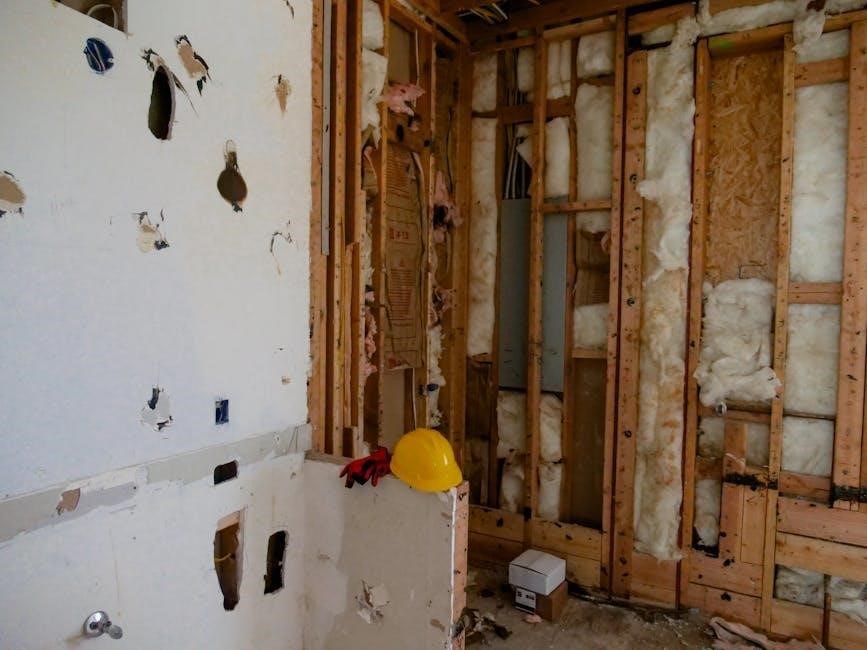Learn to rebuild turbochargers with this guide‚ covering key concepts and procedures for successful turbo rebuilding‚ using proper techniques and tools‚ in a step-by-step format‚ easily understood․
Understanding the Importance of Turbo Rebuild
Turbocharger rebuild is a crucial process that helps restore the performance and efficiency of a vehicle’s engine․ A well-rebuilt turbocharger can significantly improve the engine’s power output‚ fuel efficiency‚ and overall reliability․ The importance of turbo rebuild lies in its ability to extend the lifespan of the turbocharger‚ reducing the need for frequent replacements and saving owners a significant amount of money․ Moreover‚ a rebuilt turbocharger can be customized to meet specific performance requirements‚ making it an attractive option for vehicle owners who want to enhance their engine’s capabilities․ By understanding the importance of turbo rebuild‚ vehicle owners can make informed decisions about their engine’s maintenance and performance upgrades‚ ultimately leading to a better driving experience and improved engine longevity‚ with proper maintenance and care‚ a rebuilt turbocharger can last for many years‚ providing reliable service․

Turbocharger Failure Analysis
Identify common causes of turbocharger failure‚ including excessive heat and wear‚ using specialized tools and techniques for detailed analysis and diagnosis‚ every time‚ properly․
Causes of Turbocharger Failure
The causes of turbocharger failure can be attributed to various factors‚ including excessive heat‚ wear and tear‚ and poor maintenance․ Oil contamination and degradation can also lead to turbocharger failure‚ as it can cause the bearings to fail and the turbine to become damaged․ Furthermore‚ foreign object damage‚ such as debris entering the turbocharger‚ can also cause significant damage and lead to failure․ Additionally‚ turbocharger failure can be caused by inadequate installation‚ poor quality components‚ and insufficient balancing and calibration․ It is essential to identify the root cause of the failure to ensure that the correct repairs are made and to prevent future failures․ By understanding the causes of turbocharger failure‚ technicians can take the necessary steps to prevent and repair failures‚ ultimately reducing downtime and increasing the overall efficiency of the engine․ Proper diagnosis is crucial in this process․

Turbo Rebuild Process
Expert technicians follow a specific turbo rebuild process procedure carefully․
Step 1: Disassembling the Turbocharger
To begin the turbo rebuild process‚ disassembling the turbocharger is the first step‚ requiring careful attention to detail and specialized tools to avoid damaging components․
The turbocharger is comprised of several key parts‚ including the turbine and compressor wheels‚ bearings‚ and seals‚ all of which must be removed and inspected․
A clean and well-organized workspace is essential for keeping track of the various components and ensuring a successful rebuild․
The disassembly process involves removing the turbocharger from the engine‚ then carefully taking apart the individual components‚ using techniques such as applying heat to loosen stuck parts․
Once disassembled‚ the components can be cleaned and inspected for damage or wear‚ allowing the rebuilder to determine which parts need to be replaced or repaired․
This step is crucial in identifying the cause of the turbocharger’s failure and ensuring a proper rebuild․
The process requires patience and attention to detail to ensure all components are properly removed and accounted for․

Turbocharger Rebuilding Techniques
Various methods and tools are used for rebuilding‚ including balancing and cleaning‚ to restore performance and efficiency‚ with specialized techniques and equipment‚ for optimal results always․
Standard Rebuild Procedure
A standard rebuild procedure typically involves a series of steps‚ including disassembly‚ inspection‚ and cleaning of the turbocharger components‚ followed by replacement of worn or damaged parts‚ and reassembly․ This process requires specialized tools and equipment‚ as well as a thorough understanding of the turbocharger’s internal mechanics․ The goal of a standard rebuild is to restore the turbocharger to its original performance and efficiency‚ while also ensuring reliability and durability․ By following a standard rebuild procedure‚ technicians can help to minimize the risk of errors or omissions‚ and ensure that the rebuilt turbocharger meets the required specifications and standards․ The procedure may vary depending on the type and model of the turbocharger‚ as well as the level of damage or wear‚ but the overall objective remains the same‚ to provide a rebuilt turbocharger that is capable of delivering optimal performance and reliability․

Preparing for Turbo Rebuild
Proper preparation is essential for a successful turbo rebuild‚ requiring careful planning and attention to detail always matters․
Inspecting and Preparing the Installation Area
To ensure a successful turbo rebuild‚ inspecting and preparing the installation area is crucial․ This involves checking for any debris or damage that may have occurred during the removal of the old turbocharger․ The area should be cleaned and cleared of any obstructions to provide a smooth and even surface for the new turbocharger to be installed․ It is also important to inspect the surrounding components‚ such as the exhaust manifold and downpipe‚ for any signs of damage or wear․ By taking the time to properly inspect and prepare the installation area‚ you can help ensure a successful turbo rebuild and prevent any potential problems down the line․ Proper preparation and inspection can save time and money in the long run‚ and help to ensure that the turbocharger functions properly and efficiently․ The installation area must be free of debris and damage․
Rebuilding a turbocharger saves money and extends engine life with proper techniques․
Benefits of Turbo Rebuild
The benefits of turbo rebuild are numerous‚ including cost savings and extended engine life․ Rebuilding a turbocharger can save vehicle owners a significant amount of money compared to purchasing a new unit․ A rebuilt turbocharger can also provide improved performance and efficiency‚ as well as increased reliability․ Additionally‚ rebuilding a turbocharger can help to reduce waste and minimize the environmental impact of discarded turbochargers․ By rebuilding a turbocharger‚ vehicle owners can also gain a better understanding of the turbocharger’s components and how they work together․ This knowledge can be useful for future repairs and maintenance․ Overall‚ the benefits of turbo rebuild make it a viable option for vehicle owners looking to save money and extend the life of their engine․ With proper techniques and tools‚ a rebuilt turbocharger can provide many years of reliable service․ Proper maintenance is also essential․
